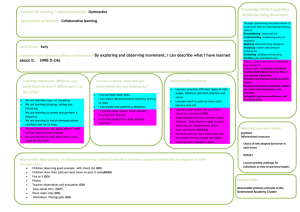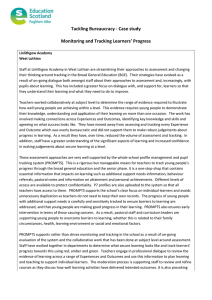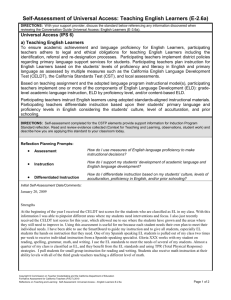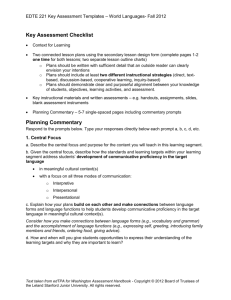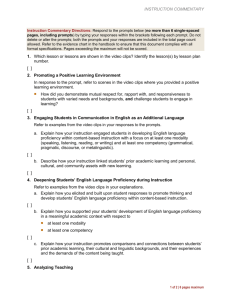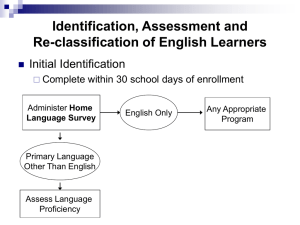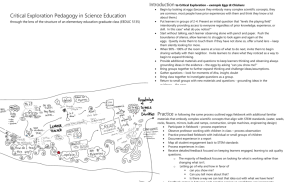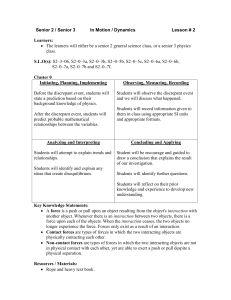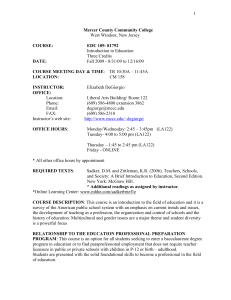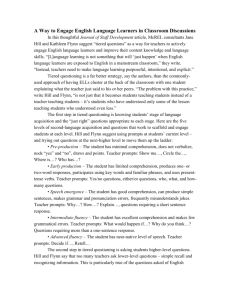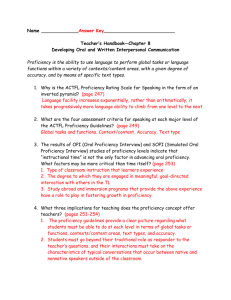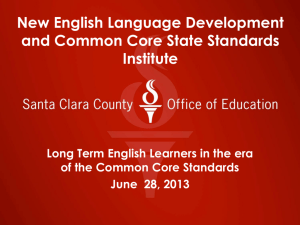Click here for the Student Information and Classroom Context
advertisement
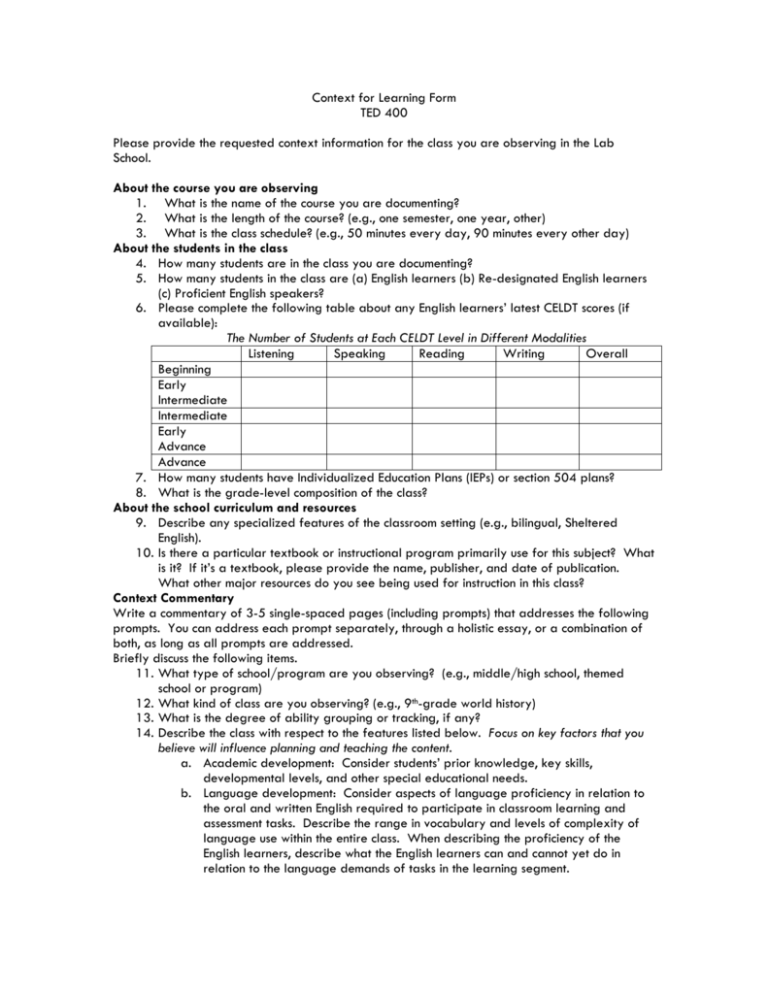
Context for Learning Form TED 400 Please provide the requested context information for the class you are observing in the Lab School. About the course you are observing 1. What is the name of the course you are documenting? 2. What is the length of the course? (e.g., one semester, one year, other) 3. What is the class schedule? (e.g., 50 minutes every day, 90 minutes every other day) About the students in the class 4. How many students are in the class you are documenting? 5. How many students in the class are (a) English learners (b) Re-designated English learners (c) Proficient English speakers? 6. Please complete the following table about any English learners’ latest CELDT scores (if available): The Number of Students at Each CELDT Level in Different Modalities Listening Speaking Reading Writing Overall Beginning Early Intermediate Intermediate Early Advance Advance 7. How many students have Individualized Education Plans (IEPs) or section 504 plans? 8. What is the grade-level composition of the class? About the school curriculum and resources 9. Describe any specialized features of the classroom setting (e.g., bilingual, Sheltered English). 10. Is there a particular textbook or instructional program primarily use for this subject? What is it? If it’s a textbook, please provide the name, publisher, and date of publication. What other major resources do you see being used for instruction in this class? Context Commentary Write a commentary of 3-5 single-spaced pages (including prompts) that addresses the following prompts. You can address each prompt separately, through a holistic essay, or a combination of both, as long as all prompts are addressed. Briefly discuss the following items. 11. What type of school/program are you observing? (e.g., middle/high school, themed school or program) 12. What kind of class are you observing? (e.g., 9th-grade world history) 13. What is the degree of ability grouping or tracking, if any? 14. Describe the class with respect to the features listed below. Focus on key factors that you believe will influence planning and teaching the content. a. Academic development: Consider students’ prior knowledge, key skills, developmental levels, and other special educational needs. b. Language development: Consider aspects of language proficiency in relation to the oral and written English required to participate in classroom learning and assessment tasks. Describe the range in vocabulary and levels of complexity of language use within the entire class. When describing the proficiency of the English learners, describe what the English learners can and cannot yet do in relation to the language demands of tasks in the learning segment. c. Social development: Consider factors such as the students’ abilities and experience in expressing themselves in constructive ways, negotiating and solving problems, and getting along with others. d. Family and community contexts: Consider key factors such as cultural context, knowledge acquired outside of school, socio-economic background, access to technology, and home/community resources. 15. Describe any district, school, or cooperating teacher requirements or expectations that might impact planning or delivery of instruction, such as required curricula, pacing, use of specific instructional strategies, or standardized tests.
